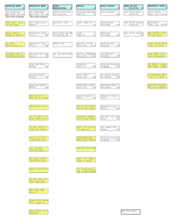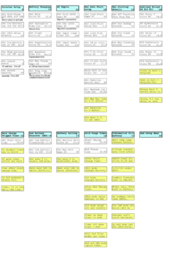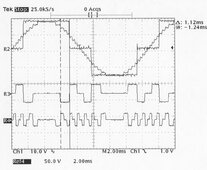oztusk
New Member
Old Trace controller SW4024 proprietary button sequences to charge lifepo4 batteries. I Don't Know !! Can ou please help? It is currently set to charge FLA batteries. They are a maintenance nightmare.
There is no LiFePO4 setting for this age of Trace inverter. Just use the Lead Acid function and customize the voltages and amps as you or LiFePO4 want in the areas of DC inverting and for AC charging. Disable Equalization by setting the time required to zero and the voltage to be same as your Max absorption or even at float voltage. Your Solar Charge Controller takes care of charging from solar panels and should also be user customizable. The battery type settings are usually just templates or suggested settings and don't matter as settings are usually customizable anyway.Old Trace controller SW4024 proprietary button sequences to charge lifepo4 batteries. I Don't Know !! Can ou please help? It is currently set to charge FLA batteries. They are a maintenance nightmare.
*EquipmentThere is a special place in hell for whomever invented the menu tree. The problem with most equity is is that I didn't design it.


Thanks for the comprehensive reply.
Yes indeed we lost power once for 4 days when someone cut an underground wire with a shovel and shorted it. Believe the settings were dropped. Only got going again when I accidentally tried the correct 2 button push. Otherwise I dont dare experiment. Wondering if I can just replace this ancient converter with something moder6which will also last 40 years... And cost less than sky high. Thanks for sny suggestions
Back to topic I was going to attempt paralleling lifepo4 with the old FLA. Without disabling the entire system, its about 10K$ worth of equipment that I couldnt replace. Any Eagle scout will tell you it can't be done. They heard that somewhere.Would rather work in watts than amps at a variety of voltages.
Try this...
How many electron volts is the equivalent of one KWH?? off topic for sure but interesting enough to mention.
Realize Trace microcontroller is 1980's technology. Program is stored in UVPROM, use the term 'firmware' loosely, it is more than 'firm'. The buttons controls are one step above Morse code.
The serial control adaptor SWCA they made actually converts serial cable data to button pushing sequences to control inverter. It fails the conversions button pushing sequence often and has to retry. Executing a remote-control sequence is very slow.
Also, for LFP battery, disconnect external temp sensor which disables lead-acid charge voltage temperature compensation.
It regulates battery charging current based on 120vac input amps, NOT battery current.
User menus
View attachment 202356
Setup Menus
View attachment 202357
I was told that the limit for SLA was lower than what I would want for lifepo4. Pressing two buttons at once would remove the voltage ceiling.. maybe that's Allah's punishment for watching YooBoob instructionals.. Guy was not delivering a comprehensible conveyance. I should do what to do what? I hope you don't think I was looking for a lifepo4 one touch push-a-button auto setting for the voltage regulator on my neighbor's model A ford either..There is no LiFePO4 setting for this age of Trace inverter. Just use the Lead Acid function and customize the voltages and amps as you or LiFePO4 want in the areas of DC inverting and for AC charging. Disable Equalization by setting the time required to zero and the voltage to be same as your Max absorption or even at float voltage. Your Solar Charge Controller takes care of charging from solar panels and should also be user customizable. The battery type settings are usually just templates or suggested settings and don't matter as settings arLe usually customizable anyway.
If charging the LIFEPO4 via the Trace charger from an AC generator or grid, make sure your AC amps when converted to DC charging amps are set lower as DC charge amps, meaning, 30 amps 120V AC input is about 10-15 DC amps at 24V DC. Charging lower and slower is preferred by LiFePO4 though they can handle more.
It's all in the manual but may take rereading and settings exploring. All the button pushing is confusing and settings are not saved if the Trace loses power.
QED My minimal experience with antique high tech conversionOne thing I Don't Know is whether or not the Trace just raises the voltage until it's blasting enough energy into whatever it's charging to meet whatever amperage criteria you have set for it .. OR .. does it povide power at a specific voltage until the current dros to nil, and then on to the next thing.
Trace inverter is a LF frequency inverter. Instead of three level high frequency PWM'g for AC output done in modern inverters, it uses three low frequency transformers with secondaries of transformers connected in series (+/-15v/0v, +/-45v/0v, and +/-135v/0v) to make sinewave. It generates up to 27 step sinewave approximation.One thing I Don't Know is whether or not the Trace just raises the voltage until it's blasting enough energy into whatever it's charging to meet whatever amperage criteria you have set for it .. OR .. does it povide power at a specific voltage until the current dros to nil, and then on to the next thing.



